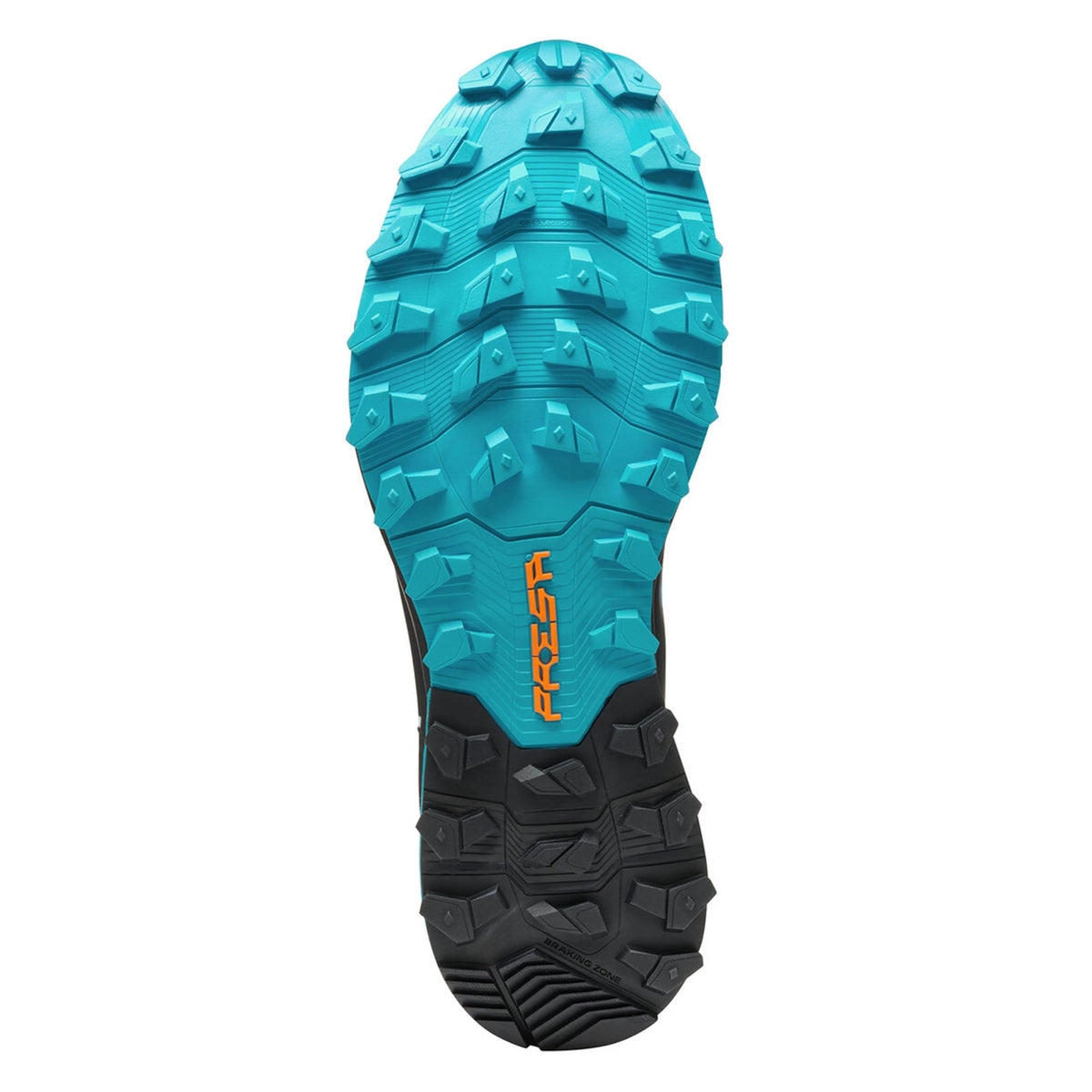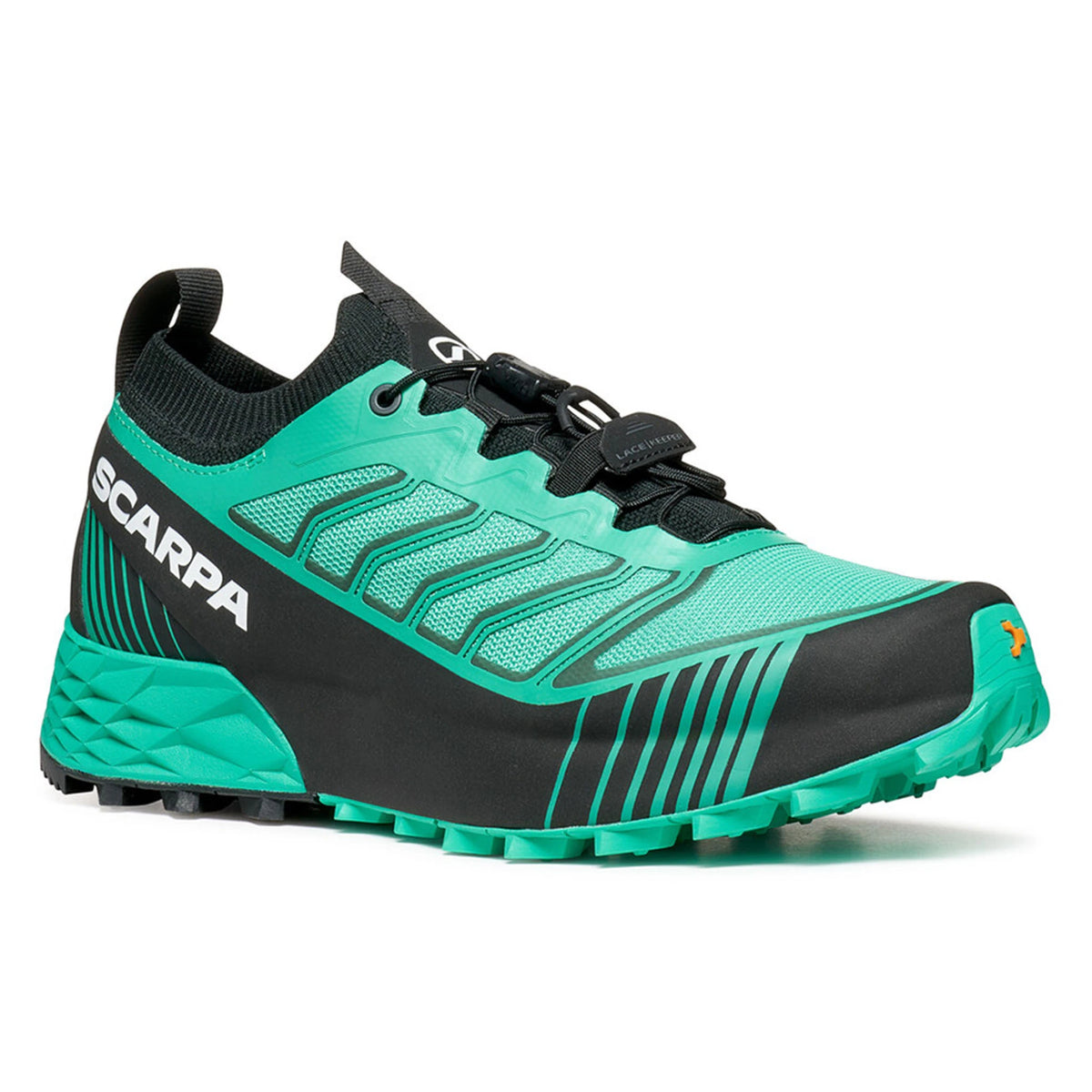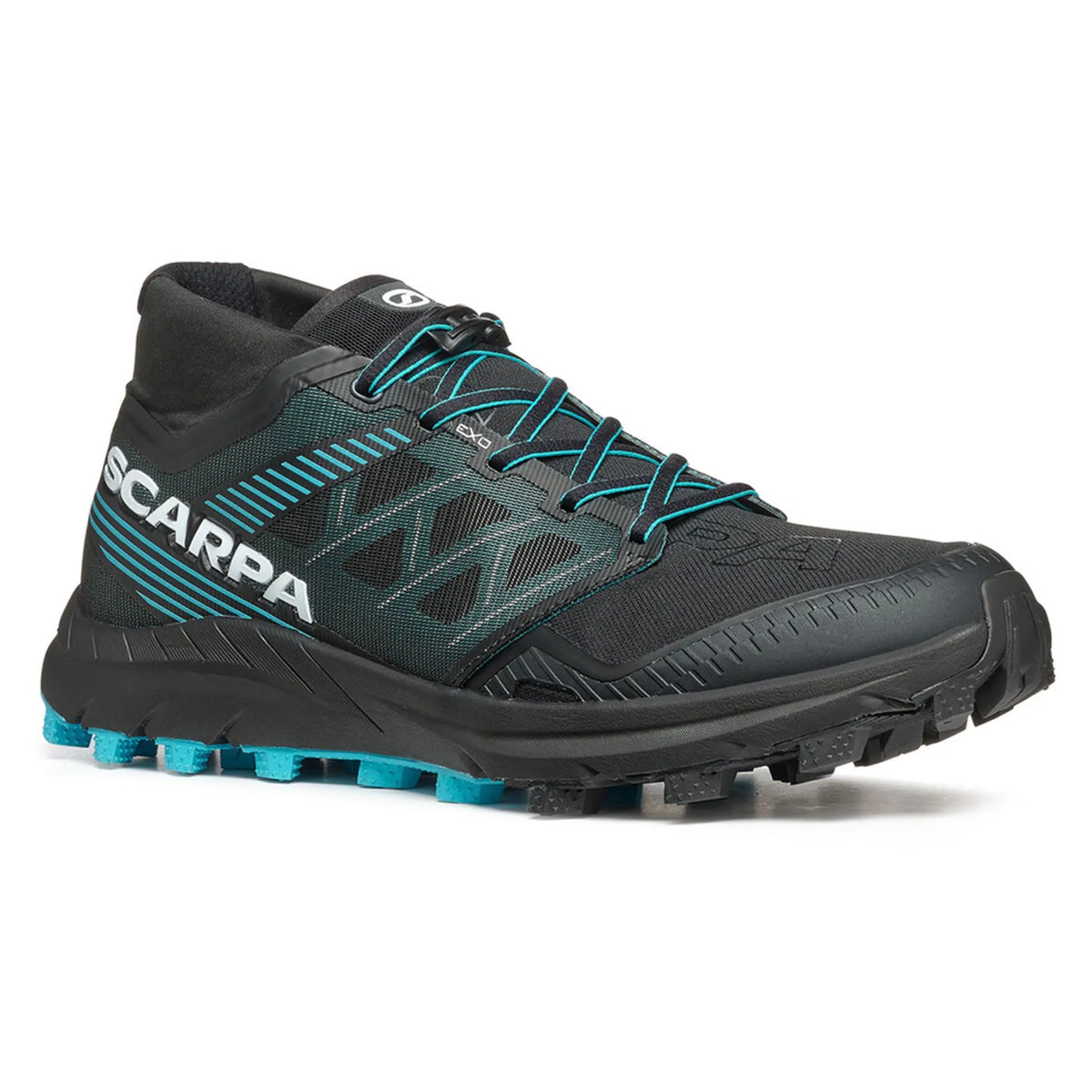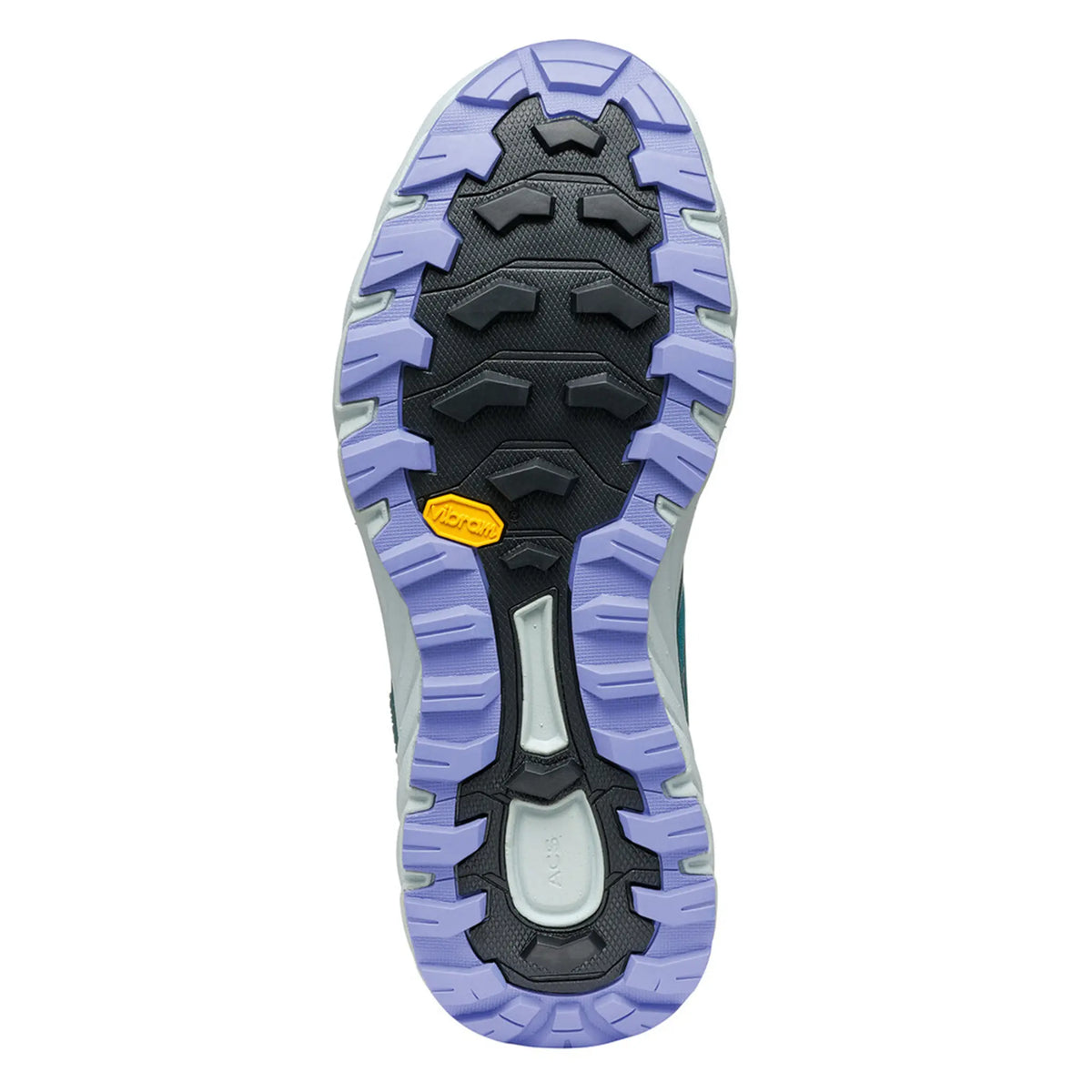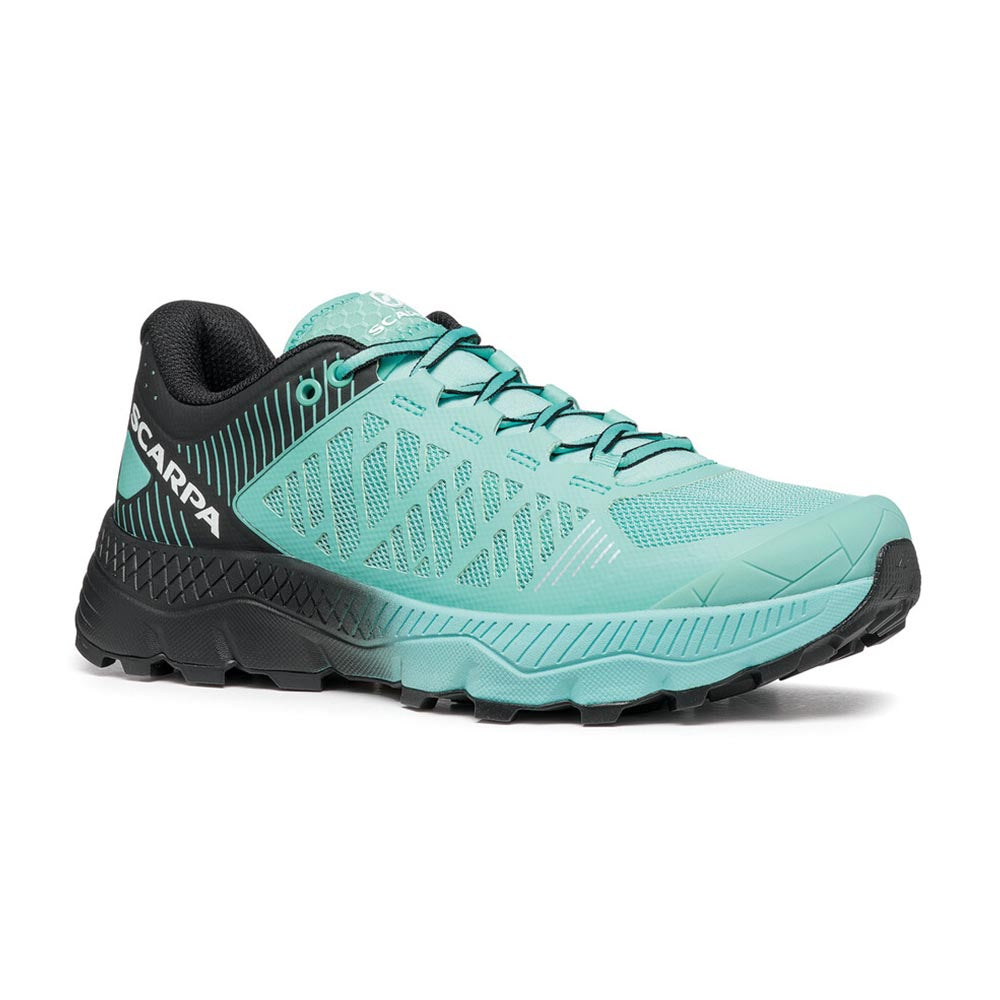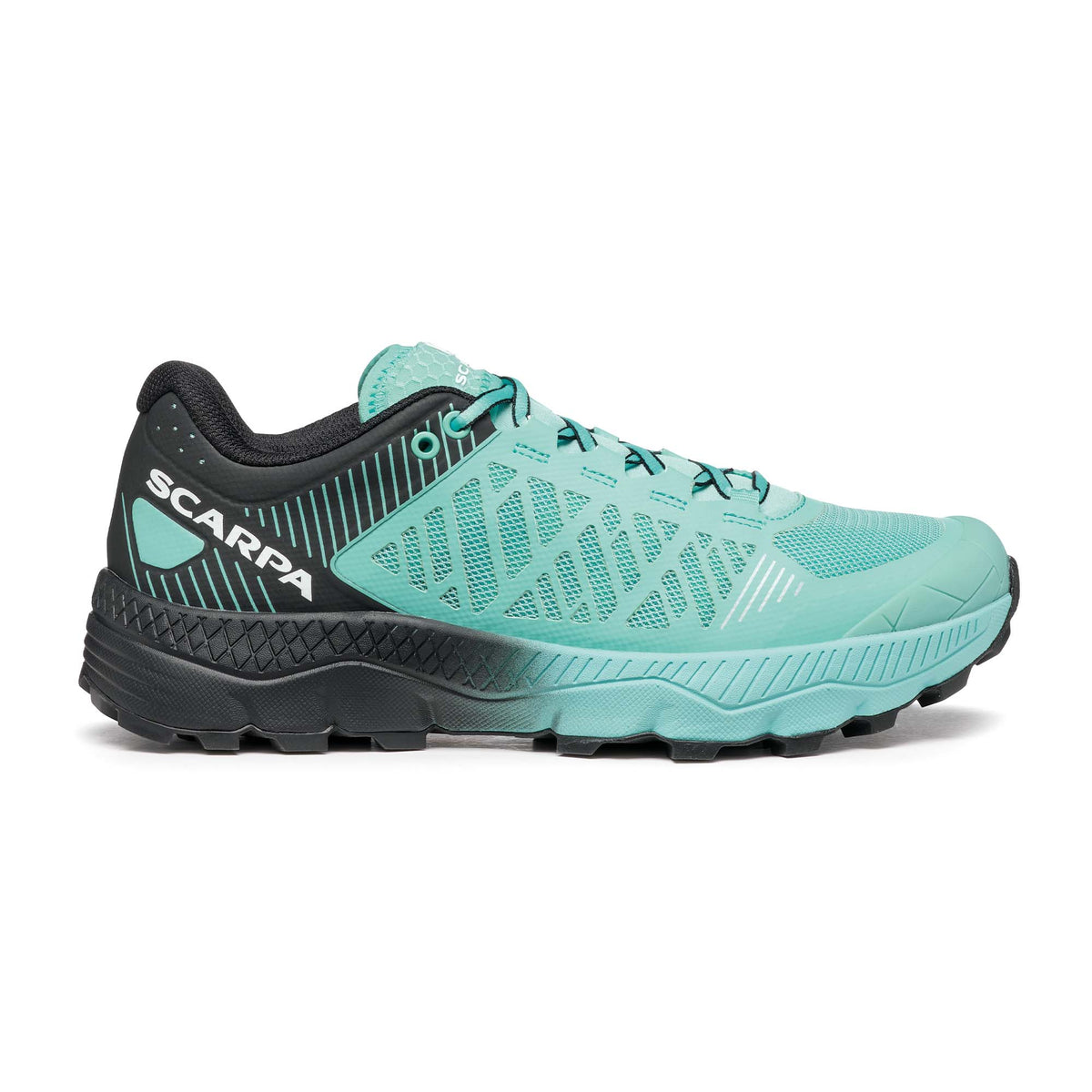Trail running in hot weather sounds like a perfect way to spend a day! Not battling wind and rain is rare for the UK even in the summer, so we all like to make the most of the good weather. However with the heat comes some added risks – especially when covering lots of miles.
SCARPA Athlete Carmine de Grandis takes us through how to safely run in hot temperatures...
Trail running in hot weather
“What a lovely day… perfect for a long run in the mountains!”
“It is sunny, no wind… I have a feeling I will do well in my trail race!”
We are all experiencing those thoughts as the “free again – Summer ’21” feeling takes over; temperatures continue to climb and the weather becomes more predictable. This would be a good time to share with you my experience of exercising outdoors in the heat – running, climbing, hiking, mountain biking, kayaking or whatever outdoor activity you do, alone or with others.
As a passionate and committed trail/mountain runner who lives in England, I am used to recognising the signs of HYPOthermia – where the body temperature gets dangerously low, usually due to prolonged exposure to cold temperatures. I have come close to experiencing it myself and have assisted fellow adventurers, and witnessed Mountain Rescue being called out to respond to this type of emergency.
However, I have never taken too seriously the risk to life presented by the opposite condition: HYPERthermia. Ian Winterburn in his excellent article in the Fellrunner magazine (Issue 124, p.32) defines it as “the body overheating to a point where it is unable to cool itself down”. I grew up in Southern Italy where temperatures would regularly go above 30°C from late spring to early autumn and rarely saw people succumb to this condition.
On reflection, this is not because of a genetic predisposition or body adaptation to the heat, but simply because people followed some simple routines:
- Do not stay too long out in the heat – seek shade;
- Keep hydrated – drink regularly
- Choose food with sodium content;
- Wear appropriate clothing – light colours, hat with neck cover;
- Go steady and take regular breaks to allow for the body to recover and cool down.
As it turns out, the advice from medics on how to prevent conditions associated with Hyperthermia, are the same used by the people living in my native village in Abruzzo, Italy.

Trail running in hot weather with an Accordion!
During June 2021, I was visiting the Lake District, UK, and unexpectedly I realised I had time to complete the Montane Tea Round. A loop of Lakeland hills visible from the George Fisher’s store in Keswick, approximately 30 miles with 3500 metres elevation, taking in several peaks.
I wanted to fulfil a dream: to play my accordion on every top I summited. This meant I would have an additional 4kg to carry on top of my day bag weight. I looked at the weather forecast and saw that the it was going to be fantastic: sunny, low wind, temperatures reaching 25°C and not a cloud in the sky.
I decided that I would start early to make the most of the cooler part of the day and I hoped to finish in around 9-10 hours – by 1pm. I made sure I had enough water and checked the map for water points along the route. I even asked a friend about the conditions of the trails, best lines to take and possible escape routes.
I packed an extra buff, extra socks, some foot cream and my special summer hat. I wore lightweight, breathable clothing, packed some extra food and headed out at 4am for my unique ‘Montane Tearound with an Accordion’ extravaganza.

I soon realised that this adventure would be a challenge. I was only wearing a t-shirt at 5am and already felt warm. Catbells and Robinson came and went, I played on the tops and kept going with a smile. No-one was out there yet, however, by 10:30am, at the top of High Style, I was starting to feel unusually tired and with some heaviness in my muscles. I blamed the rocky ascent to High Style, and took every opportunity to refill my water bottles, take on board electrolytes and carbohydrates.
Six hours in, I was only half way round; my audiences were expanding – families, people walking their dogs, serious hikers, students doing their Duke of Edinburgh expeditions – finishing by 1pm was no longer achievable and I had underestimated the conditions. I did not panic, but I made some decisions to keep myself safe on the exposed Fells:
- Cool down at every opportunity
- Go steady – slower is better to conserve energy
- Keep checking map reading accuracy – watch out for signs of unusual mistakes
- Stop for a few minutes if there was any shade.
By early afternoon, the sun was still beating hard, but there was a light breeze which made moving easier. I finished my ‘Montane Tearound with an Accordion’ in 13 hours, 7 minutes. I was happy, but I realised that there was something I had underestimated considerably: the heat.
Years of experience had helped me manage my adventure and make the right decisions to stay safe. However, should I have shortened my round or even not started? Did I know enough about Hyperthermia and how to manage it? I decided to learn a bit more about this condition and share my findings in this blog.
Hyperthermia
Hyperthermia can present itself in several stages. Heat stress, heat fatigue, heat cramps and heat rush are among the milder ones. Simple measures help prevent their onset and, once spotted, recovery can be fast. Heat exhaustion and heat stroke, however, are far more serious and can lead to death if left unchecked. Hyperthemia is often the consequence of working under exertion in extreme heat, for a period of time – a race, a tiring hike with a heavy backpack, a hill climb in the heat – would all soon lead to showing signs of Hyperthermia: dizziness, weakness, nausea, thirst, headache, muscle ache or cramps, swelling, red pimple-like bumps and, if the condition worsened, co-ordination issues, trouble concentrating, cool and clammy skin, moving quickly to irritability, confusion, flushed skin, reduced sweating and weak or rapid pulse. (https://www.healthline.com/health/hyperthermia#seekmedical-attention)
Running in the summer is fun. Nature is at its best. It fills all our senses to bursting. Long days, more predictable weather and accessible remote locations are perfect for trail/ultra/mountain running and adventures – including wild camping. The simple question I hear you ask is; “How do we prepare and make decisions, when we know we are going to face very warm weather?” I will make some suggestions about how to manage trail running in the heat based on research and experience.
How to stay safe trail running in hot weather
1) Being prepared is better than becoming or managing a casualty.
Prior to your run, race or adventure, check a reliable weather forecast and do not only focus on the maximum temperature. Chances of cloud cover, humidity, wind direction, speed, wind chill will all play a part in how well you and your friends will cope.
Pack wisely and include enough water, electrolytes and good energy food. You may not like to wear a hat, but in hot weather carry one and wear it before you think you need to.
If you are going out with others, make sure you share plans and preparation – talk about how you will all manage the heat. Finally, check if anyone in the group has a history of not doing well in the heat. Make use of the cooler times of day (leave early, stop to rest at the hottest time (if you can) and enjoy the cooler evenings. Try to avoid going out between 12 and 3pm.
2) Know your challenge
Prepare your route carefully and work out the effort level it will require based on your fitness level and how hard/fast you or your group intend to cover the distance. Are there any areas to rest in the shade, water sources, chances to shorten the route to keep the experience enjoyable and avoid Hyperthermia?
While out during races or personal challenges, we focus on success and our mind is ready to work harder than usual. Often our desire to succeed clouds our judgement on how hard we should push rather than adapt to the changing environmental conditions.
In the heat, keeping effort levels steady reduces the chances of our body not coping – especially during prolonged climbs in the mountains. If you are venturing into a new remote area, make sure you carefully study the terrain which could leave you exposed or moving slower longer than you’d expect. Crossing a boulder field will take considerably longer than you think, though it may only be a short section of your route. Finally, talk to people who know the area well, search the internet, read blogs, note down how people have coped in similar conditions.

3) Know “yourself”
Reflecting and learning from our outdoor experiences is key to developing sound “mountain judgement”. Good decision making and risk management are essential skills to enjoying and challenging ourselves in the great outdoors. I recently undertook the British national trail – St Cuthbert’s Way, with a friend.
They said: “My feeling is that in the cold you can adapt, wear more clothes, eat more and run more, drink warm drinks, get out of the wind. The heat worries me more because there is a limit to the number of clothes that you can take off, only so much water one can drink before worrying about losing salts and Hyponatremia (too much water, too little salt in the blood).
A hat feels like it is keeping the sun off, but also keeping my heat in. I develop a fear of stretches of path that do not have any shade – and there are lots of these in England – the Cheviots, the lakes and the Peak District are all devoid of trees, unlike the Alps!”. As it happens, the weather turned out to be the hottest we have had in 2021.
She successfully completed the hike in the heat, but her knowledge of herself and the information she provided me with before we started was key to our success. We adapted our schedule to start earlier on the second day of the expedition due to the weather forecast predicting temperatures in excess of 26 degrees Celsius and no wind.
We also knew that our progress would be slower due to bigger climbs and rough paths in the Cheviot hills, Northumberland National Park. Hyperthermia in the form of heat fatigue and exhaustion became a real danger by midday.
A slowdown in pace, thirstiness, tiredness, light headache were the signs that told me we needed to find shade regularly and stop to allow body temperature to drop before continuing for another stretch. We were in a very remote location, and we still had about 10 miles to hike before reaching the closest town.
The only shade we could find was laying down at the base of stone walls. Drinking and eating regularly was vital to keeping our energy levels topped up – one never succeeds on an empty tank! Finally, visualising the next stretch of the hike through good map reading skills, removing any excess weight from my friend by carrying her rucksack for a while and keeping positive helped us reach the town where we rested and talked about our experience whilst recovering.
4) Choose your gear
It is important to choose carefully the gear you will carry during hot conditions. You may not need two warm base layers, but you may want to take an extra water bottle; a spare buff is preferable to warm hat – soaked in streams it can keep your neck cool; foot cream keeps your feet moisturised and blister free.
The weight you choose to carry will make a difference to the effort you will require your body to make for the duration of your adventure. Light, sweat wicking clothing will also help to feel more comfortable and the right footwear will get you from start to finish and not leave you stranded in the heat.
During the St Cuthbert’s Way expedition I used the Rush Mid GTX which were perfect. My friend used the Scarpa approach shoes she had used on previous expeditions, the Crux Women.
5) Adapt your goal rather than abort
An adventure is always worth it! If the weather turns out to be really hot, before ditching your plans, look at other options: shorten the route, change location (somewhere with more shade), adjust what you are planning to carry, or the start time (early morning or late afternoon), or even move it by a day or two? These decisions will make for a more enjoyable experience and avoid the need to recover from Hyperthermia.
6) Look after yourself and your party
When you are out in extremely hot weather, remember you are not the only one affected. Keep an eye out for other runners and hikers. Look out for signs of lack of preparation or early signs of Hyperthermia. Be kind, but do not fail to act if you believe someone is in danger – be sure you know how to summon help (Mountain Rescue) and how to share your location accurately. Time is key, an accurate location will draw medical support more quickly if required; Hyperthermia is a fast-acting condition and the risk to life elevates faster than in cases of Hypothermia.
7) Review your experience
The weather is the weather! Some days it will be cold, some others will be hot and some may be just right. It is important that we reflect on what we did right and what did not work so well during our adventures. This knowledge is vital when learning to deal with extreme climate. Hyperthermia can be prevented by taking simple steps and being prepared.
Finally, in 2015 I raced at the Ultra Trail Mont Blanc. This was a year of extremely hot weather on the course and at altitude the heat was unforgiving. Sensible preparation, following the advice of the race organisers and good personal management of the race (including going slower than I wanted) helped me complete one of the best races and adventures of my life – a full round of Mont Blanc crossing France, Italy and Switzerland.
Running and exercising in the heat is possible, but like anything to do with the great outdoors, it must be done safely. I would highly recommend the Fellrunner’s Association leaflet on Hyperthermia as a great guide to prepare for you ‘warmer days’ adventure. You can find the leaflet HERE.
Carmine de Grandis is an Italian Trail and Ultrarunner, now based in Norfolk. Keep up with Carmine’s adventures on his Instagram @outdoorspirit1




